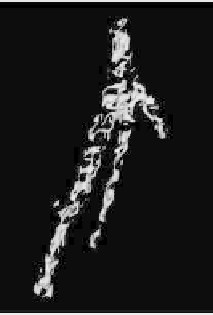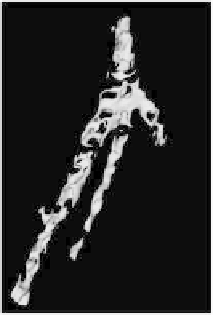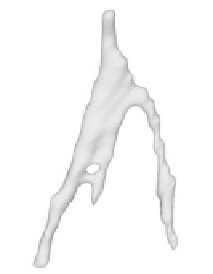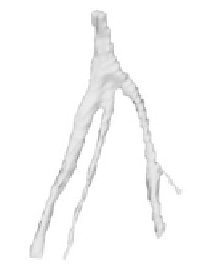Biomedical Engineering Reference
In-Depth Information
(a)
(b)
(c)
(d)
Figure 7.14:
(a) Result of steps (1)-(4) with grid 3
×
3
×
3. ( b) T-surfaces evo-
lution (step 1). (c) Solution for initial grid. (d) Final solution for grid 1
×
1
×
1.
T-surfaces algorithm, the extracted geometry becomes closer to that of the tar-
get (Fig. 7.14(c)).
However, the topology remains different. The problem in this case is that
the used grid resolution is too coarse if compared with the separation between
branches of the structure. Thus, the flexibility of the model was not enough to
correctly perform the surface reconstruction.
The solution is to increase the resolution and to take the partial result of
Fig. 7.14(c) to initialize the model in the finer resolution. In this case, the correct
result is obtained only with the finest grid (1
×
1
×
1). Figure 7.14(d) shows the
desired result obtained after nine interactions. We also observe that new portions
of the branches were reconstructed due to the increase of T-surfaces flexibil-
ity obtained through the finer grid. We should emphasize that an advantage of




